#asia news 2019
Explore tagged Tumblr posts
Text
Destination of the Year award for 2023 goes to Subic Bay
Recently the Subic Bay Metropolitan Authority (SBMA) got recognized yet again in the field of sports tourism as it won the Destination of the Year award for 2023 during the 6th Philippine Sports Tourism Awards, according to the social media announcement via the FUNtastic Subic Bay Facebook page. To put things in perspective, posted below is an excerpt from the social media post. Some parts in…
#2019 SEA Games#achievements#achievers#Asia#awards#Bing#Blog#blogger#blogging#Carlo Carrasco#domestic tourism#Eduardo Aliño#events#Facebook#Funtastic Subic#geek#Google#Google Search#local tourism#Multisport#news#Philippine Sports Tourism Awards#Philippine tourism#Philippines#Philippines blog#Pinoy#SBMA#SEA Games#SEA Games blog#social media
0 notes
Text
The team went in search of caterpillar fungus in Nepal and Yamraj was walking behind, 3 people died in a sudden avalanche
Image Source: AP symbolic photo Avalanche incidents in Nepal are not taking the name of stopping. In the latest case, three people were killed and 12 others injured in another avalanche incident in Nepal’s Mugu district. A local official gave this information on Sunday. The incident took place at a time when a total of 15 people from Jumla district had gone to Mugu in search of the caterpillar…

View On WordPress
#annapurna avalanche#Asia Hindi News#Avalanche#avalanche 2023#avalanche at manaslu#avalanche disaster type#avalanche hit nepal#avalanche in nepal#avalanche in nepal 2019#avalanche nepal#avalanche video#caterpillar#died#everest avalanche#fungus#international news#k2 avalanche#manaslu avalanche#manaslu avalanche 2022#manaslu base camp avalanche#mount everest avalanche#Nepal#Nepal and Yamraj#nepal avalanche#Nepal Avalanche 2#Nepal Avalanche 3#nepal avalanche moments#nepal avalanche video#nepal avalanches#news
0 notes
Text
I too watched the hbomberguy video and went straight to Twitter, whereupon I found that James Somerton had mentioned danmei in one of his videos and it made everyone mad, so I went looking and. yeah here's a full transcription of his just completely incorrect coverage of cql and mdzs from "Hollywood's (Gay) China Problem" so you don't have to watch it and give him views:
"The 2019 fantasy series The Untamed, featuring an unlikely bond between a man with magic powers and a stoic prince, started an online craze over the pair's implicit romance, but the show's promotion focused on its portrayal of Chinese traditional culture, a push consistent with Chinese communist party propaganda.
The show was... Queerbait-y. But the novel on which it was based [shows a picture of the fanmade cover for The Grandmaster of Demonic Cultivation made by fan translator team Exiled Rebels] certainly was not. That featured a very explicit love story between the two main characters, but was self-censored when adapted to meet the censorship guidelines of the Xi Jinping government. But it didn't matter. Like so much queerbaiting before, people saw through the weak veneer of heterosexuality. They "took the bait", so to speak. The series has accumulated a total of 9.5 billion views in China as of this summer, and had also received an international release via Netflix. It was described as a global phenomenon, taking off like no BL series before it, making its way all around Asia and with the Netflix deal, all across Europe and North America as well.
Tencent, the Chinese streaming platform it originated on, saw 2.6 million new subscribers to the service when it was released. And WeTV, an app that lets you watch BL content anywhere in the world, saw growth of 250% while the show was airing. In January of 2020, the cast members planned to embark on a multi-city, worldwide fan meeting tour. Cities included Bangkok, Singapore, Tokyo, Seoul, Macau, Kuala Lumpur, Toronto, Los Angeles, New York... But it was cancelled due to COVID-19.
Even the Chinese government has endorsed it. The overseas popularity of these romantic sword-wielding heroes is often highlighted in Chinese media coverage focusing on the massive overseas streaming numbers and its ability to build a growing appreciation of the charm of Chinese culture."
763 notes
·
View notes
Text
"Lead is a neurotoxin; it causes premature deaths and lifelong negative effects. It’s said “there is no safe level of lead exposure” — as far as we know, any lead causes damage, and it just gets worse the more exposure there is.
After a 20-year, worldwide campaign, in 2021 Algeria became the final country to end leaded gasoline in cars — something the US phased out in 1996. That should make a huge difference to environmental lead levels. But lots of sources remain, from car batteries to ceramics...
Bangladesh phased out leaded gasoline in the 1990s. But high blood lead levels have remained. Why? When researchers Stephen Luby and Jenny Forsyth, doing work in rural Bangladesh, tried to isolate the source, it turned out to be a surprising one: lead-adulterated turmeric.
Turmeric, a spice in common use for cooking in South Asia and beyond, is yellow, and adding a pigment made of lead chromate makes for bright, vibrant colors — and better sales. Buyers of the adulterated turmeric were slowly being poisoned...
But there’s also good news: A recent paper studying lead in turmeric in Bangladesh found that researchers and the Bangladeshi government appear to have driven lead out of the turmeric business in Bangladesh.
How Bangladesh got serious about lead poisoning
The researchers who’d isolated turmeric as the primary cause of high blood lead levels —working for the nonprofit International Center for Diarrheal Disease Research, Bangladesh — went to meet with government officials. They collected samples nationwide and published a 2019 follow-up paper on the extent of the problem. Bangladesh’s Food Safety Authority got involved.
They settled on a two-part approach, starting with an education campaign to warn people about the dangers of lead. Once people had been warned that lead adulteration was illegal, they followed up with raids to analyze turmeric and fine sellers who were selling adulterated products.
They posted tens of thousands of fliers informing people about the risks of lead. They got coverage in the news. And then they swept through the markets with X-ray fluorescence analyzers, which detect lead. They seized contaminated products and fined sellers.
According to the study released earlier this month, this worked spectacularly well. “The proportion of market turmeric samples containing detectable lead decreased from 47 percent pre-intervention in 2019 to 0 percent in 2021,” the study found. And the vanishing of lead from turmeric had an immediate and dramatic effect on blood lead levels in the affected populations, too: “Blood lead levels dropped a median of 30 percent.”
The researchers who helped make that result happen are gearing up for similar campaigns in other areas where spices are adulterated.
The power of problem-solving
...When the Food Safety Authority showed up at the market and started issuing fines for lead adulteration, it stopped being a savvy business move to add lead. Purchasers who were accustomed to unnatural lead-colored turmeric learned how to recognize non-adulterated turmeric. And so lead went from ubiquitous to nearly nonexistent in the space of just a few years.
That’s a better world for everyone, from turmeric wholesalers to vulnerable kids — all purchased at a shockingly low price. The paper published this month concludes, “with credible information, appropriate technology, and good enough governance, the adulteration of spices can be stopped.”
There’s still a lot more to be done. India, like Bangladesh, has widespread adulteration of turmeric. And safety testing will have to remain vigilant to prevent lead in Bangladesh from creeping back into the spice supply.
But for all those caveats, it’s rare to see such fast, decisive action on a major health problem — and impressive to see it immediately rewarded with such a dramatic improvement in blood lead levels and health outcomes. It’s a reminder that things can change, and can change very quickly, as long as people care, and as long as they act."
-via Vox, September 20, 2023
#lead#lead poisoning#turmeric#bangladesh#south asian food#south asia#public health#public safety#government#good news#hope
758 notes
·
View notes
Text
Alarm bells ring in Japan as experts warn of fast-spreading new Covid variant KP. 3 - Published July 19, 2024
Paywalled at the South China Morning Post: Unpaywalled by Covidsafehotties.
The country reported a 39 per cent week-on-week surge in infections from July 1 to 7, with Okinawa the hardest hit
Japan is grappling with a new and highly contagious coronavirus variant that is fuelling the country’s 11th wave of Covid-19 infections, health experts warn. The KP. 3 variant is spreading rapidly, even among those who are vaccinated or have recovered from previous infections, according to Kazuhiro Tateda, president of the Japan Association of Infectious Diseases.
“It is, unfortunately, the nature of the virus to become more resilient and resistant each time it changes into a different form,” Tateda told This Week in Asia. “People lose their immunity quite quickly after being vaccinated, so they have little or no resistance.”
Tateda, who sits on Japan’s advisory panel formed at the start of the pandemic, said the coming weeks will be critical as authorities monitor the variant’s spread and impact.
While hospitals have reported a sharp uptick in Covid-19 admissions, Tateda said he is “relieved that not many of these cases are severe”. Typical symptoms of the KP. 3 variant include high fever, sore throat, loss of smell and taste, headaches, and fatigue.
According to the health ministry, medical facilities across Japan logged a 1.39-fold – or 39 per cent – increase in infections from July 1 to 7, compared to the previous week.
Okinawa prefecture has been the hardest hit by the new strain of the virus, with hospitals reporting an average of nearly 30 infections per days. The KP. 3 variant has accounted for more than 90 per cent of Covid-19 cases nationwide, the Fuji News Network reported, leading to renewed concerns about bed shortages at medical facilities.
Since Japan’s first detected Covid-19 case in early 2020 involving a man who returned from the Chinese city of Wuhan, East Asian nation has recorded a total of 34 million infections and around 75,000 related deaths. The country’s Covid-19 caseload peaked on August 5, 2022, when more than 253,000 people were receiving treatment.
Japan’s uptick in cases coincides with similar increases being observed globally. In the US, the Centres for Disease Control and Prevention reported a 23.5 per cent week-over-week rise in the number of people visiting hospitals with Covid-19 symptoms during the week ending July 6.
High-profile US.figures such as President Joe Biden and Doug Emhoff, husband of Vice-President Kamala Harris, have recently tested positive and gone into isolation. Meanwhile, several riders in the ongoing Tour de France cycling race have also returned positive test results.
Experts say it is too early to determine the full impact of the new variant on Japanese businesses or cross-border activities like travel. Precautionary measures are already in place at the country’s air and seaports to monitor the health of incoming arrivals. However, the global spike in cases may deter some Japanese from venturing abroad this summer.
A recent survey by Nippon Life insurance found that just 3.2 per cent of Japanese plan to travel abroad in the coming months, which is likely to depress annual travel figures once again. In 2023, Japan saw 9.62 million outbound travellers, a recovery after three years of extremely low pandemic-era numbers, but still far below the 20.01 million outbound travellers recorded in 2019.
Despite the latest surge, infectious disease expert Tateda insists there is no need for panic in Japan. However, he emphasised the importance of following precautions implemented during the pandemic’s peak, such as mask-wearing in public, handwashing, and social distancing.
Tateda also stressed that anyone testing positive should immediately isolate themselves.
#covid#mask up#pandemic#covid 19#coronavirus#wear a mask#sars cov 2#still coviding#public health#wear a respirator
207 notes
·
View notes
Text
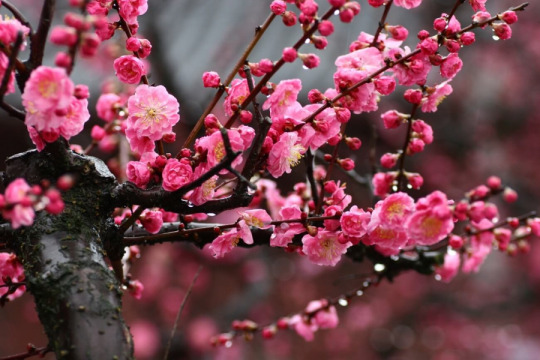
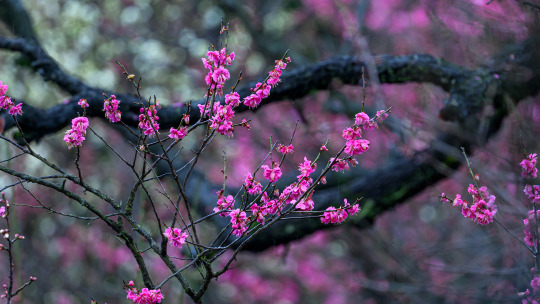

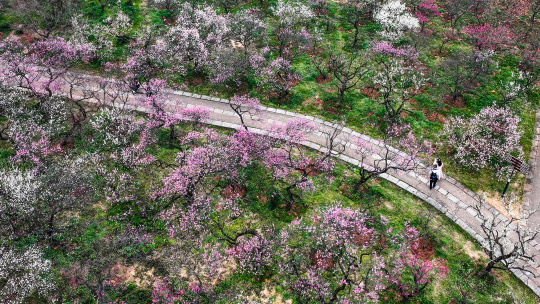
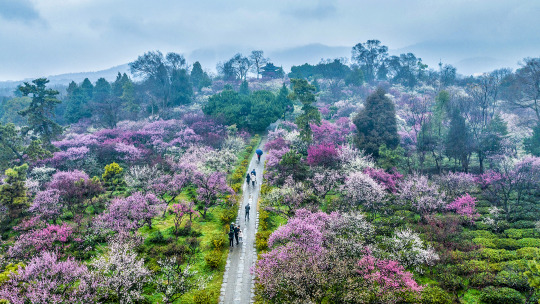
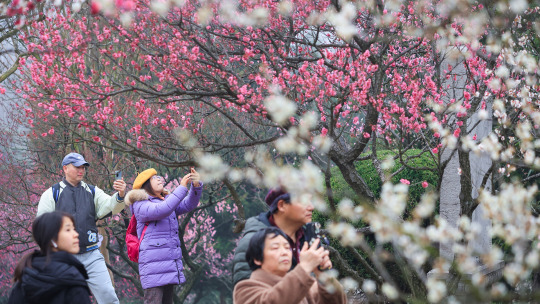
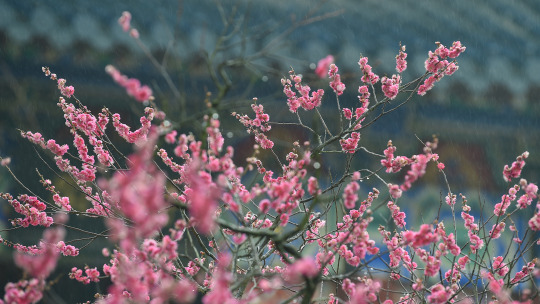
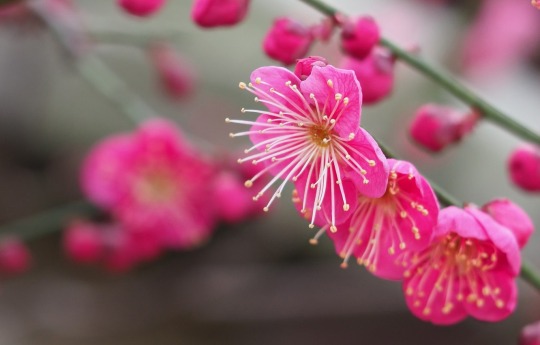
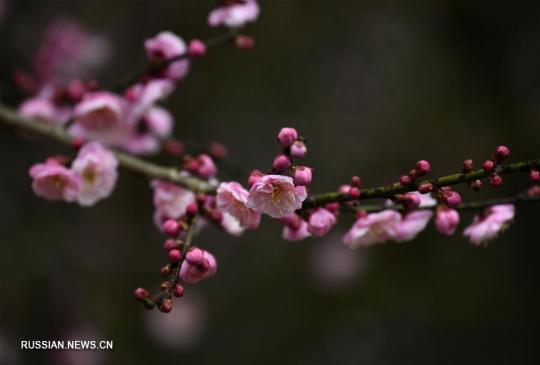
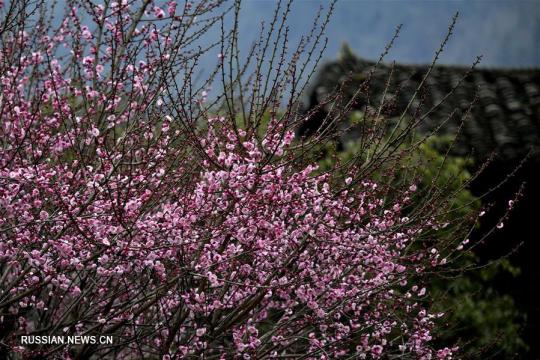
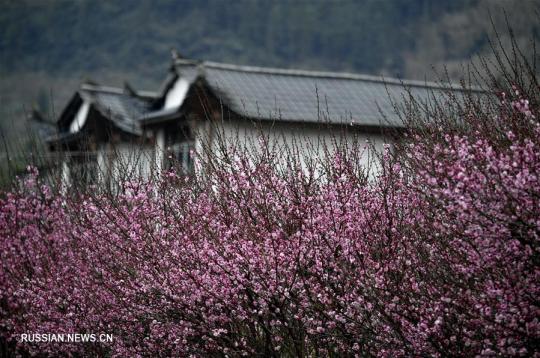
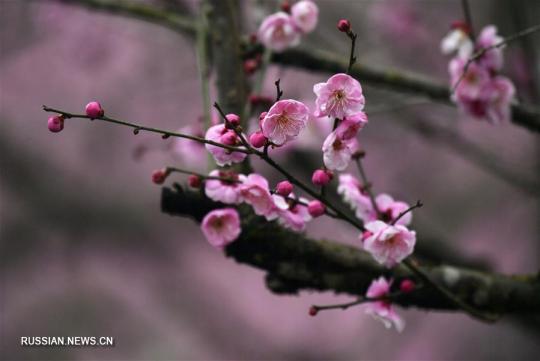
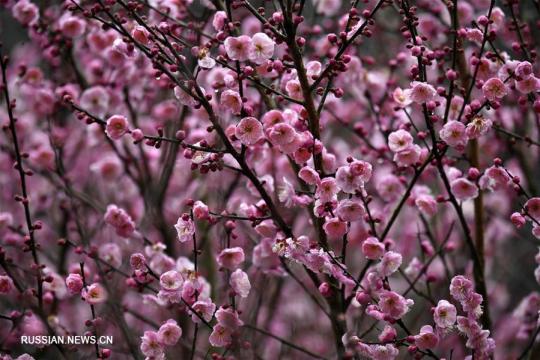
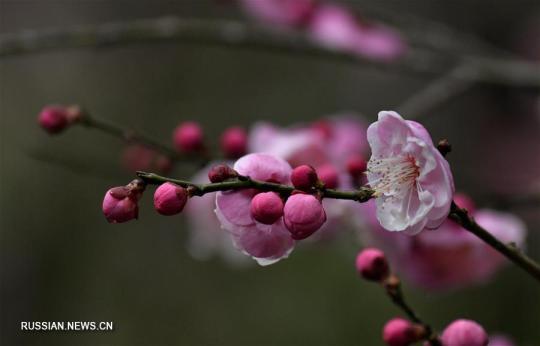
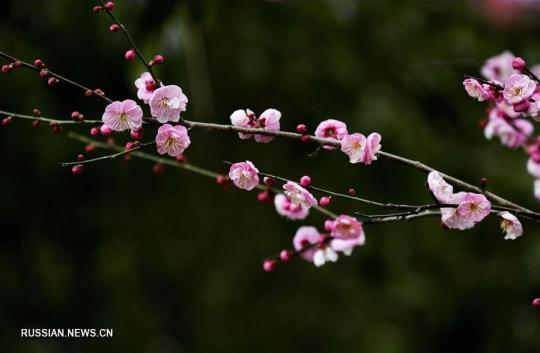
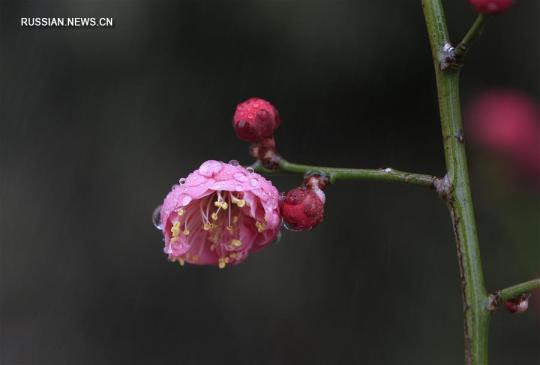
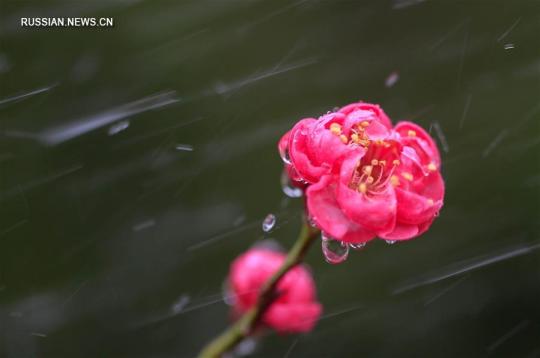

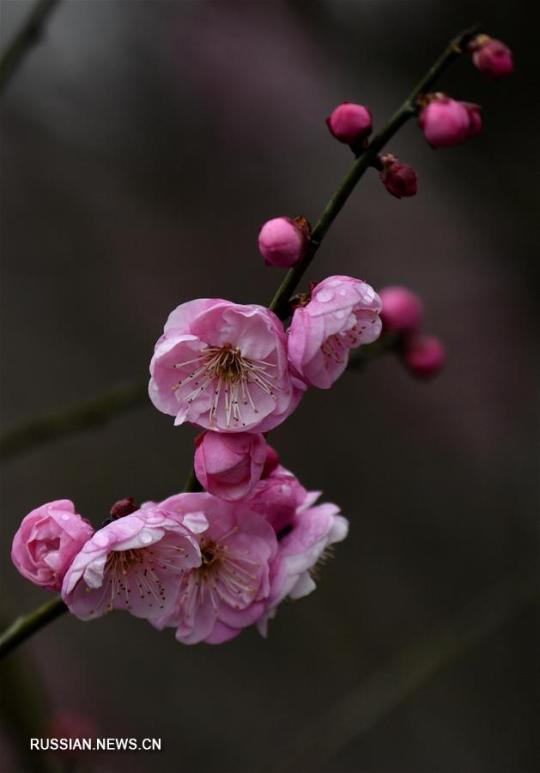

Вот так цветёт дикая китайская слива - Мэйхуа. Мэйхуа - самый главный поэтический символ в Китае. Слива входит и в "4 благородных", и в "три друга зимы". Её цветение приходится на конец зимы-начало весны. В Китае слива мэйхуа была вестником весны, нередко её цветение совпадало с празднованием китайского Нового года — Праздника весны 春节 чунь-цзе, который отмечается в конце января-начале февраля по лунному календарю.
Родиной мэйхуа считается район реки Янцзы, откуда она широко распространилась по всей Восточной Азии, включая Японию, Корею, Тайвань, Вьетнам. Произрастает на каменистых склонах гор на высоте от 300 до 2500 метров над уровнем моря. Мэйхуа зацветает раньше других цветов и выдерживает морозы до -50°. Нежные цветы нередко покрывает снег, создавая удивительный контраст. Цветы сливы отличаются разнообразием: есть белые, розовые, красные.
В эпоху Тан (618-907) в китайской живописи появляется отдельное направление — живопись мэйхуа, которое окончательно оформилось в эпоху Сун (960-1279).
This is how the wild Chinese plum, Meihua, blooms. Meihua is the most important poetic symbol in China. Plum is included in both the "4 noble ones" and the "three friends of winter". Its flowering occurs at the end of winter-the beginning of spring. In China, the Meihua plum was the herald of spring, often its flowering coincided with the celebration of the Chinese New Year — the Spring Festival 春节 Chun-tse, which is celebrated in late January-early February according to the lunar calendar.
The birthplace of Meihua is considered to be the Yangtze River region, from where it has spread widely throughout East Asia, including Japan, Korea, Taiwan, and Vietnam. It grows on rocky mountain slopes at an altitude of 300 to 2500 meters above sea level. Meihua blooms earlier than other flowers and withstands frosts up to -50 °. Delicate flowers are often covered with snow, creating an amazing contrast. Plum flowers are diverse: there are white, pink, red.
In the Tang era (618-907), a separate direction appeared in Chinese painting — Meihua painting, which finally took shape in the Song era (960-1279).
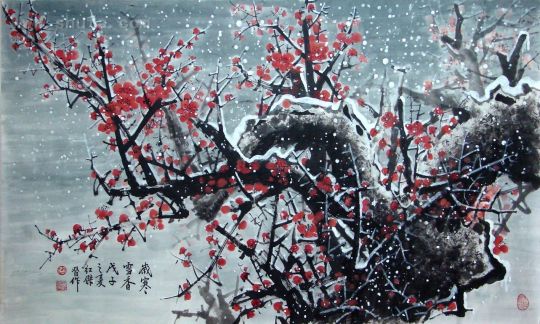
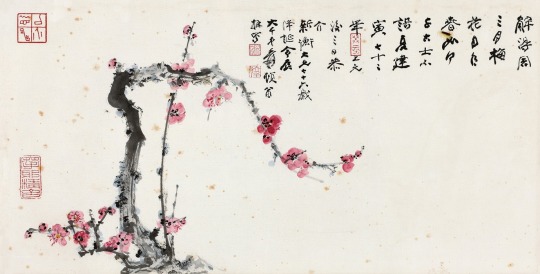

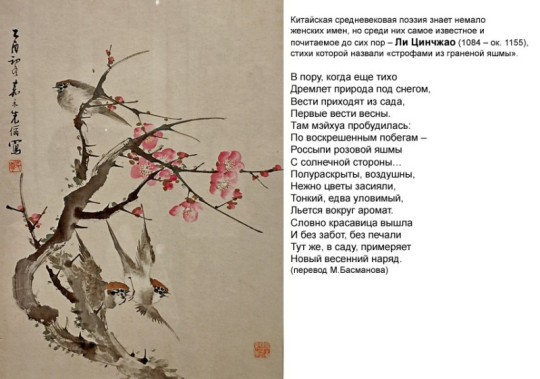
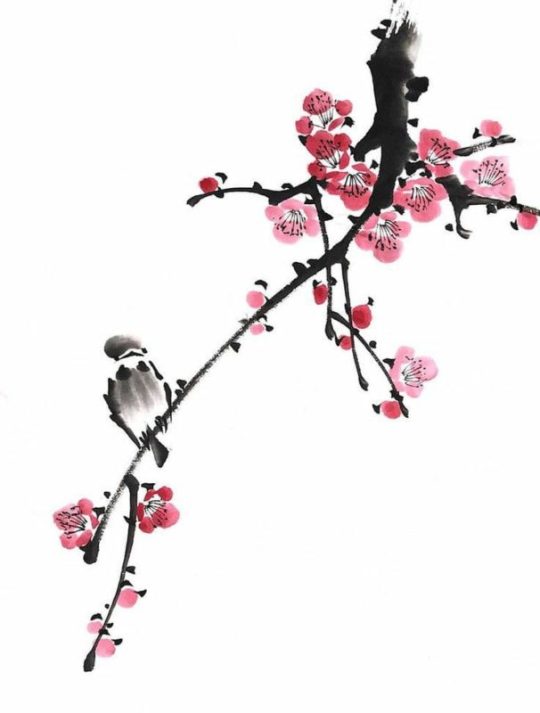
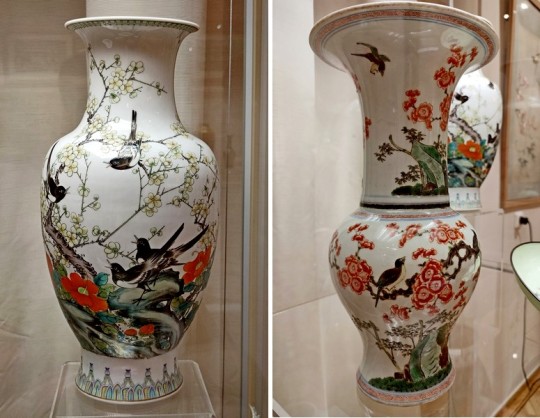
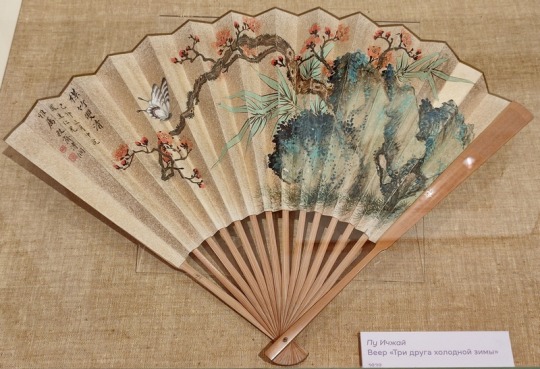
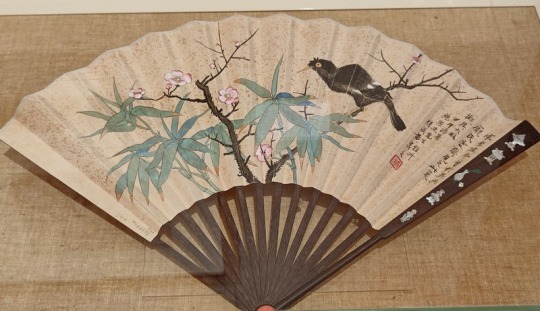
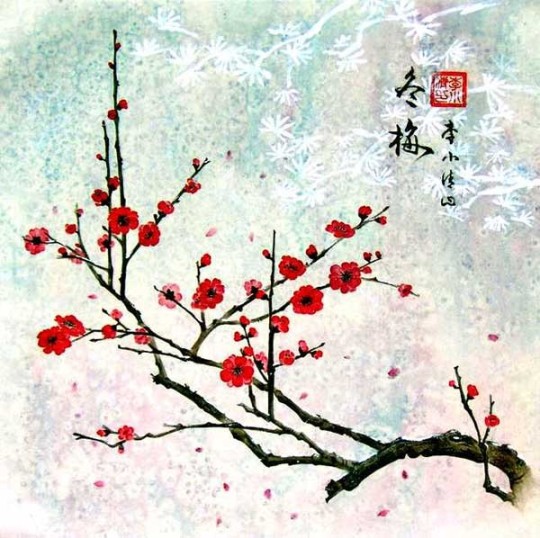
Источник://anashina.com/sliva-meihua/, //russian.news.cn/importnews/2019-02/01/c_137791307_10.htm, //russian.people.com.cn/n3/2017/0130/c31516-9172556-5.html, /chainka.com/blog/simvolika/255-tsvetushchaya-sliva-mejkhua, bogachkova1957.livejournal.com/86338.html, /koryo-saram.site/glavnyj-simvol-nachinayushhejsya-vesny-i-zhizni-czvety-slivy-매화/, /dveimperii.ru/articles/tsvetuschaya-dikaya-sliva.
#China#Xuanen#Nanking#nature#flora#plum#Meihua#flowers photography#flowers#flower aesthetics#bloomcore#painting#Asian Art#Китай#Сюаньэнь#Нанкин#природа#флора#слива#Мейхуа#цветы#живопись
196 notes
·
View notes
Text
In 1833, Parliament finally abolished slavery in the British Caribbean, and the taxpayer payout of £20 million in “compensation” [paid by the government to slave owners] built the material, geophysical (railways, mines, factories), and imperial infrastructures of Britain [...]. Slavery and industrialization were tied by the various afterlives of slavery in the form of indentured and carceral labor that continued to enrich new emergent industrial powers [...]. Enslaved “free” African Americans predominately mined coal in the corporate use of black power or the new “industrial slavery,” [...]. The labor of the coffee - the carceral penance of the rock pile, “breaking rocks out here and keeping on the chain gang” (Nina Simone, Work Song, 1966), laying iron on the railroads - is the carceral future mobilized at plantation’s end (or the “nonevent” of emancipation). [...] [T]he racial circumscription of slavery predates and prepares the material ground for Europe and the Americas in terms of both nation and empire building - and continues to sustain it.
Text by: Kathryn Yusoff. "White Utopia/Black Inferno: Life on a Geologic Spike". e-flux Journal Issue #97. February 2019.
---
When the Haitian Revolution erupted [...], slaveholding regimes around the world grew alarmed. In response to a series of slave rebellions in its own sugar colonies, especially in Jamaica, the British Empire formally abolished slavery in the 1830s. [...] Importing indentured labor from Asia emerged as a potential way to maintain the British Empire’s sugar plantation system. In 1838 John Gladstone, father of future prime minister William E. Gladstone, arranged for the shipment of 396 South Asian workers, bound to five years of indentured labor, to his sugar estates in British Guiana. The experiment [...] inaugurated [...] "a new system of [...] [indentured servitude]," which would endure for nearly a century. [...] Desperate to regain power and authority after the war [and abolition of chattel slavery in the US], Louisiana’s wealthiest planters studied and learned from their Caribbean counterparts. [...] Thousands of Chinese workers landed in Louisiana between 1866 and 1870, recruited from the Caribbean, China and California. [...] When Congress debated excluding the Chinese from the United States in 1882, Rep. Horace F. Page of California argued that the United States could not allow the entry of “millions of cooly slaves and serfs.”
Text by: Moon-Ho Jung. "Making sugar, making 'coolies': Chinese laborers toiled alongside Black workers on 19th-century Louisiana plantations". The Conversation. 13 January 2022.
---
The durability and extensibility of plantations [...] have been tracked most especially in the contemporary United States’ prison archipelago and segregated urban areas [...], [including] “skewed life chances, limited access to health [...], premature death, incarceration [...]”. [...] [In labor arrangements there exists] a moral tie that indefinitely indebts the laborers to their master, [...] the main mechanisms reproducing the plantation system long after the abolition of slavery [...]. [G]enealogies of labor management […] have been traced […] linking different features of plantations to later economic enterprises, such as factories […] or diamond mines […] [,] chartered companies, free ports, dependencies, trusteeships [...].
Text by: Irene Peano, Marta Macedo, and Colette Le Petitcorps. "Introduction: Viewing Plantations at the Intersection of Political Ecologies and Multiple Space-Times". Global Plantations in the Modern World: Sovereignties, Ecologies, Afterlives (edited by Petitcrops, Macedo, and Peano). Published 2023.
---
Louis-Napoleon, still serving in the capacity of president of the [French] republic, threw his weight behind […] the exile of criminals as well as political dissidents. “It seems possible to me,” he declared near the end of 1850, “to render the punishment of hard labor more efficient, more moralizing, less expensive […], by using it to advance French colonization.” [...] Slavery had just been abolished in the French Empire [...]. If slavery were at an end, then the crucial question facing the colony was that of finding an alternative source of labor. During the period of the early penal colony we see this search for new slaves, not only in French Guiana, but also throughout [other European] colonies built on the plantation model.
Text by: Peter Redfield. Space in the Tropics: From Convicts to Rockets in French Guiana. 2000.
---
To control the desperate and the jobless, the authorities passed harsh new laws, a legislative program designed to quell disorder and ensure a pliant workforce for the factories. The Riot Act banned public disorder; the Combination Act made trade unions illegal; the Workhouse Act forced the poor to work; the Vagrancy Act turned joblessness into a crime. Eventually, over 220 offences could attract capital punishment - or, indeed, transportation. […] [C]onvict transportation - a system in which prisoners toiled without pay under military discipline - replicated many of the worst cruelties of slavery. […] Middle-class anti-slavery activists expressed little sympathy for Britain’s ragged and desperate, holding […] [them] responsible for their own misery. The men and women of London’s slums weren’t slaves. They were free individuals - and if they chose criminality, […] they brought their punishment on themselves. That was how Phillip [commander of the British First Fleet settlement in Australia] could decry chattel slavery while simultaneously relying on unfree labour from convicts. The experience of John Moseley, one of the eleven people of colour on the First Fleet, illustrates how, in the Australian settlement, a rhetoric of liberty accompanied a new kind of bondage. [Moseley was Black and had been a slave at a plantation in America before escaping to Britain, where he was charged with a crime and shipped to do convict labor in Australia.] […] The eventual commutation of a capital sentence to transportation meant that armed guards marched a black ex-slave, chained once more by the neck and ankles, to the Scarborough, on which he sailed to New South Wales. […] For John Moseley, the “free land” of New South Wales brought only a replication of that captivity he’d endured in Virginia. His experience was not unique. […] [T]hroughout the settlement, the old strode in, disguised as the new. [...] In the context of that widespread enthusiasm [in Australia] for the [American] South (the welcome extended to the Confederate ship Shenandoah in Melbourne in 1865 led one of its officers to conclude “the heart of colonial Britain was in our cause”), Queenslanders dreamed of building a “second Louisiana”. [...] The men did not merely adopt a lifestyle associated with New World slavery. They also relied on its techniques and its personnel. [...] Hope, for instance, acquired his sugar plants from the old slaver Thomas Scott. He hired supervisors from Jamaica and Barbados, looking for those with experience driving plantation slaves. [...] The Royal Navy’s Commander George Palmer described Lewin’s vessels as “fitted up precisely like an African slaver [...]".
Text by: Jeff Sparrow. “Friday essay: a slave state - how blackbirding in colonial Australia created a legacy of racism.” The Conversation. 4 August 2022.
#abolition#tidalectics#multispecies#ecology#intimacies of four continents#ecologies#confinement mobility borders escape etc#homeless housing precarity etc#plantation afterlives#archipelagic thinking#geographic imaginaries#kathryn yusoff#katherine mckittrick#sylvia wynter#fred moten#achille mbembe#indigenous pedagogies#black methodologies
211 notes
·
View notes
Text
2024 Book Review #58 – Ministry for the Future by Kim Stanley Robinson

Introduction
Kim Stanley Robinson is one of those names I’ve been meaning to around to since approximately forever ago, one of the real Canonical science fiction writers I’ve always felt slightly ashamed I’ve never read (see also: Gene Wolfe). Ministry for the Future in particular is a book I remember getting an immense amount of buzz and downright hagiographic reviews when it came out, even well beyond the usual science fiction circuit. So I went into this with vague impressions and high expectations – which, as it always does, turned out to be a rather dire mistake.
I do not regret having read this book, but that’s on its merits as a cultural artifact rather than a work of literature. Which is to say, I think this is interesting more than it’s good. It’s more or less equal parts a (rather experimental) novel, a work of futurism, and a political manifesto – and despite being incredibly sympathetic to the latter project, I’m not sure it really succeeds at any of them. Which might just be because I’m reading it now instead of when it came out – it is incredibly of its time, in a way that’s genuinely impressively dated even just a few years latter, and which continuously took me out of it.
It was, at least, very formally interesting. The tiny chapters and constant bouncing between different areas of interest kept it from ever becoming too much of a grind, too.
Synopsis
The book is, roughly, a history of the struggle against climate change and to restore the biosphere to equilibrium, beginning with the signing of the Paris Agreement in 2015 and continuing over the next half-century so until the world has been nigh-unrecognizably transformed and victory in that struggle seems more or less assured.
It is, nominally, focused on its only explicit divergence from our own world before the book was written (so, somewhere in 2017-2019) – the titular Ministry, a subsidiary body created by the Paris Accords to pursue and safeguard the interests of future generations – at first this is basically conceived of as a meaningless goodwill gesture by most of the really powerful people agreeing to it. But after a monstrously deadly heat wave across South Asia kills tens of millions of people in a matter of days, more and more people around the world start to wake up to the necessity of drastic action.
Over the next generation the Ministry plays a major (though less so than you might imagine) role in the transition of the world to a sustainable and just future, and the book follows both their efforts and the changing conditions around them that make any of it possible.
The story is told through a dizzying variety of perspectives – there a couple of what you might call protagonists (the minister for the future herself, a Scottish aid worker caught in the heat wave who barely survives and spends the rest of his life failing to cope with PTSD), but they occupy what has to be much less than half of the book. The rest is short persuasive essays, meeting minutes, anonymous vignettes from everyone from an Antarctic research scientist-turned-geoengineer to a de facto enslaved miner in Namibia, and odd little prose poems from the perspective of ‘the market’ or ‘photons’ or similar. It’s all mixed together quite thoroughly – few chapters are more than six or seven pages, many much less, and each new chapter marks a perspective jump. It’s a fascinating reading experience, if nothing else.
Taken As A Novel
...The Ministry for the Future is just not a very good one.
Partial blame goes to I think the very admirable instinct to avoid making some select group of technocrats and activists the Protagonists of History and instead try to maintain something like a global perspective. But the unfortunate reality of it is that the world is very big, and even at 500 pages the book is comparatively quite small. The result is that this is a story where the overwhelming majority of the plot is told in the passive voice, exposition relaying how trends never before mentioned and institutions not yet introduced are conveniently doing this or that to help fix the world, and then rarely if ever mentioned again. One wonders why the titalur Minister was chosen as a protagonist at all, given how the vast majority of her narrative could just as easily been filled by another other ‘life-on-the-ground’ level perspective (her great contribution is convincing the assembled centrall bankers of the world to do something about two thirds of the way into the book).
Also – while the instinct to avoid making ones main characters the perfectly agentic and hypercompetent engine of history is certainly admirable, it’s rather undercut by then still having one of those, but just giving us no real insight or perspective into it.
The mystique of the shadowy, untouchable terrorist syndicate has a powerful hold in the minds of action and science-fiction authors, and Robinson is apparently no exception. The energy transition in the book is greatly sped up by a near-omnipotent ecoterrorist movement that, through everything from sabotage and assassination to drone strikes and missile barrages, (literally) decapitates the entire fossil fuel industry and destroys so many planes and cargo ships so as to cripple the global airline and shipping industries. I’ll leave aside plausibility (for now) – but it just seems so self-evidently obvious that these are the main characters of the story. But with the exception of a single anonymous vignette, the story refuses to ever give the people involved names, faces, or personalities, nor dive into the whys and hows of specific operations. It’s quite frustrating, all the moreso because it feels like the author just saving himself the work of figuring any of that out.
Our two ostensible main characters themselves also just feel like – not a wasted opportunity, but definitely one more could have been made of? The world changes dramatically, almost unrecognizably, through the course of the novel, but their lives really don’t. Here and there sure, there’s not nothing, but the overwhelming majority of their pagecount is spent living what could very easily have been somewhat atypical lives in contemporary Switzerland. Despite all the talk of a ‘super-depression’ and the crippling of global trade, no shortages ever particularly affect them, no natural disasters touch ther homes. A lot of Mary’s chapters really just kind of read like tourism ads for the country Robinson clearly fell in love with at some point.
Taken as Futurism
Which is to say, taken as an exploration of how the world might actually develop, and a plausible prediction of the future based on current trends. Which, given the sheer amount modern frontier technologies, economic and political theories, and just general social trends are all discussed (not to mention a great deal of the breathless marketing and reception it received) the book is clearly trying to be. And which – woof, it does not work out.
The book is full of generational political upheavals occurring mostly because it’s a dramatically convenient time for them to. Most glaringly, the cataclysmic heat wave that sets off the book’s plot also conveniently utterly discredits the BJP and leads the landslide election of an entirely fictitious political movement across all of India, who then spend the next decades dramatically transforming the nation’s politics and economy with unbroken success and to a reception of thunderous applause. There’s no characters with names or faces actually involved in this, no more than a couple paragraphs of encyclopedia-like exposition devoted to it, but it’s the example and engine the whole rest of the book hangs on. The transition of the African Union to a powerful and legitimate supernational entity and the granting of permanent autonomy to Hong Kong (and much of southern mainland China why not) are even less dwelt on.
Now, this all could be excused as just the inevitable causalities of trying to write a book with a global scope – and I am sympathetic to that. But to begin with, I know just barely enough about the politics and the economics of a lot of several of the places touched on or used as dramatic examples to see how surface level and implausible the predicted changes are, and I can’t help but think it’s probably a similar story with all the other lightly touched on placed I don’t know much about (I remain agnostic on the accuracy of the geoengineering and carbon-clearing technologies projected, except that a lot of them suspiciously amenable to a single coherent aesthetic of the future).
More damning, to me at least, is the matter of agency – only the ‘good’ people seem to possess any of it. The conservative opposition exists as this vague, undifferentiated mass – standing athwart history and slowing things down in vague ways, but never really vital or active, never a danger to the political movements that have won or the progress that has been made. There are references to xenophobia and anti-refugee sentiment, but despite a refugee crisis that makes that of the 2010s look like a rounding error, it never leads to any really dangerous political backlash. Given how the world’s actually trending, the book’s vision of politics goes beyond optimism and into outright delusion.
This is especially true for how the book conceives of violence. Political violence is, in the book’s telling, near-universally the province of the ecological Left (with the exception of two events that provide excuses for dramatic set-pieces but fail to actually achieve anything at all). As mentioned above, seemingly omnipotent and untouchable eco-terrorists assassinate dozens of hundreds of the global elite for their crimes against the planet, destroy so many jet liners and cargo ships to force the adoption of new transportation methods, and sabotage so many coal- and oil-powered plants they help force the abandonment of the as fuels. They do this with no real blowback or reverses, no ruthless campaigns of state violence breaking apart the networks or destroying the infrastructure, no loss of public support from the disruptions in food and fuel their attacks would cause – it is not a realistic vision of what ecoterrorism might look like in the coming decades, it’s a plot device in the form of Robert Ludlum villains with no action movie secret agents around to stop them.
As a Political Manifesto
Which is, after all, clearly the real motivation behind the book, and the reason it received as many accolades as it did. It’s also where the book is easily at its most interesting – if, tragically, rather incoherent. Which might be me holding it to a higher standard than is fair but look, there’s only so many essays extolling the failure of the market or the coming obsolescence of war or whatever you can put in your book before I start holding it to the standard of actual rigour.
Mostly it feels like the book is undercut by its commitment to relentless optimism and need to jump around – a great deal of the book is spent giving the most positive possible gloss on particular phenomena or institutions from across the world in a paragraph or two, then say it needs to be scaled up on a national or global scale with no further thought or consideration of costs. Even when it’s not wrong it just feels unserious.
The subject the book spends the plurality of its time on – the main thrust of its program, if anything is – is economics and monetary policy. The great project of the Ministry is convincing the assembled central bankers of the world to create a new currency – a ‘carbon coin’ minted as a reward for sequestering or preventing the removal of a single ton of carbon for at least a century, with a guaranteed minimum value and appreciation over the same period – which would in time replace the us dollar as a global reserve currency and medium of exchange. The arguments around which are frustrating, because they go from plausible and compelling to wildly optimistic to the social science equivalent of star trek technobabble and back again without warning or any detectable pattern. It’s an interesting idea, at least, though one you get the sense is being imperfectly relayed – and the arguments for why the uncrowned monarchs of the global financial system would actually agree to it just aren’t convincing in the least.
Given the amount of times the book uses standard progressive language about how vital empowering minorities, women, the traditionally excluded and so on is to the fight to save the planet, it’s honestly kind of amusing the degree to which the big dramatic set pieces involve appealing to the conscience and principles of the most embedded representatives of The System imaginable. Running through the book are both a disdain and dismissal of economics as a field and a strongly felt technocratic sensibility and desire to have seasoned experts at the helm managing their areas of expertise – it can never quite decide whether bringing the world’s central banks under increased political control is something to be fought for, or a threat to hold over the bankers heads to get them in line and focused on the important task of creating a de facto world state (the quasi-utopia envisioned at the end of the book could just as easily be the globalist dystopia from any conspiracy theorist’s screen with no changes but the valence of the adjectives used to describe it).
It’s more peripheral, but Robinson’s clear affection for the nation of Switzerland and continuous praise of its many virtues in both politics and society does clash a bit with, well, reality. It’s weird to go from a chapter about needing to abolish tax havens to talking about how enlightened self-interest has left the Swiss government entirely behind the mission of fighting climate change.
A Product of it’s Time
Is a weird thing to call a book written barely more than five years ago, I’m aware. But it’s honestly kind of shocking just how aged and dated the book feels, reading it in 2024. Despite just everything I’ve written above, I’m trying not to judge it as harshly as I might, because I feel like I’d have been much more generous if various things didn’t keep taking me out of it.
Some of them are things that can’t really be held against it – the passages about Russia and it’s relationship with Europe reads as almost comical now, to be sure, but so does every sci fi book in the ‘80s talking about the USSR – but that doesn’t mean they don’t hurt the feeling of reading the history of the future. The book was published in October 2020, so the complete non-mention of not even COVID specifically but just any pandemic or major disease outbreaks feel positively unreal.
Other things are less the book already being falsified by history and more just seeing what turned out to be pretty transient intellectual fashions immortalized in print. Seeing a serious, celebrated book talk about the revolutionary potential of the blockchain to create a democratic new economy is enough to turn a hair grey. And on a less extreme level, talking up Modern Monetary Theory as this revolutionary hack of solve economics just feels so very incredibly pre-pandemic.
Too Long; Didn’t Read
Not angry I read it, but more because writing this review was fun and engaging than for its merits as a work of art. Can’t judge it too harshly, given that the task it set for itself is basically impossible – but Robinson’s written enough books that he probably should have known that before he started it.
The set piece at the beginning of someone living through the dead heat wave was incredibly compelling drama, at least.
50 notes
·
View notes
Text









Glaucomaria carpinea (syn. Lecanora carpinea)
Sometimes keeping track of lichen names is hard. Genetic analysis is constantly shuffling lichens into new genera and species, and obviously not all sources are able to update immediately--or sometimes different groups don't agree with the justification for the shuffle! I love a lichen controversy! But in the case of G. carpinea, formerly L. carpinea, it was shuffled in 2019, and so I *think* the conflicting name info I am finding is just due to delay, not disputation. This crustose lichen has a thin, white thallus that begins life smooth and becomes discolored (gray or beige) and cracked with age. It often has a bright white prothallus ring around the perimeter. It produces lecanorine (plate or saucer shaped) apothecia with orange-brown or pale pink discs covered in a thick layer of white or gray pruina (chalky deposit). G. carpinea grows on smooth bark or wood in temperate regions of Africa, Asia, Europe, New Zealand, and North America.
images: source | source
info: source | source | source
#lichen#lichens#lichenology#lichenologist#mycology#ecology#biology#fungi#fungus#symbiosis#symbiotic organisms#life science#environmental science#natural science#nature#natural history#beautiful nature#weird nature#trypo#trypophobia#Glaucomaria carpinea#Glaucomaria#I'm lichen it#lichen a day#daily lichen post#lichen subscribe
99 notes
·
View notes
Text
End of month update - December (+ January 1st - 3rd)
Hello, all! This is the end-of-month update, where I post Tumblr’s current top four films that have received the highest percentage of “yes,” “no,” and “haven’t even heard of this movie” votes. Sorry for the delay on this one!
As of today, the top four films with the highest percentage of “yes” votes are:

Finding Nemo (2003) | Shrek (2001) |The Lion King (1994) | Toy Story (1995)

Fifty Shades of Grey (2015) | Sausage Party (2016) | Pinocchio (2019) | The Human Centipede 2 (Full Sequence) (2011)
Finally, the top four films with the highest percentage of “haven’t even heard of this movie” votes are:

Faat Kiné (2001) | Zumiriki (2019) | Welcome Back, Mr. McDonald (1997) | Now Add Honey (2015)
This top four changed through the new addition of Welcome Back, Mr. McDonald (1997), which replaced Like a Cat on a Highway (2017).
That’s it for December’s end-of-month update! Remember that you can view last month’s update by clicking here. Additionally, you can view the full ranked Letterboxd lists of movies that have come up on this blog by clicking the following links:
This list is ranked from highest-to-lowest percentage of “yes” votes.
This list is ranked from highest-to-lowest percentage of “no” votes.
This list is ranked from highest-to-lowest percentage of “haven’t even heard of this movie” votes.
Remember to vote on the polls that are currently running: The Crowd (1928) | The Thin Man (1934) | Song of the South (1946) | The Outcasts (2017) | Beneath Clouds (2002) | Steamboat Bill, Jr. (1928) | Meet the Feebles (1989) | Evolution (2001) | Drop Dead Gorgeous (1999) | High School Musical 2 (2007) | The Passion of Joan of Arc (1928) | High School Musical 3: Senior Year (2008) | Apollo 13 (1995) | Revenge of the Pink Panther (1978) | March of the Penguins (2005) | The Docks of New York (1928) | Gimme Shelter (1970) | The Singer Not the Song (1961) | Entertaining Mr. Sloane (1970) | Freaky Friday (1976) | Storm Over Asia (1928)
Polls will be back to their usual schedule tomorrow!
35 notes
·
View notes
Text
Muntinlupa City Health Office says there are no local cases of COVID-19 FLiRT variants detected
Recently in the City of Muntinlupa, the city health office stated that there are no cases of the new variants of COVID-19, according to a Manila Bulletin news report. To put things in perspective, posted below is an excerpt from the Manila Bulletin report. Some parts in boldface… The Muntinlupa City Health Office said there are no cases of the new variants of Covid-19 in the city amid the start…

View On WordPress
#2019 Novel Coronavirus#2019 Novel Coronavirus (NCoV)#Alabang#Alabang blog#Asia#Blog#blogger#blogging#Carlo Carrasco#City Government of Muntinlupa#City Health Office#City of Muntinlupa#Coronavirus#COVID-19#Department of Health (DOH)#geek#health#journalism#Manila Bulletin#Metro Manila#Muntinlupa#Muntinlupa City#news#Philippines#Philippines blog#Pinoy#South Metro Manila#South Snippets#Southeast Asia#Southies
0 notes
Text
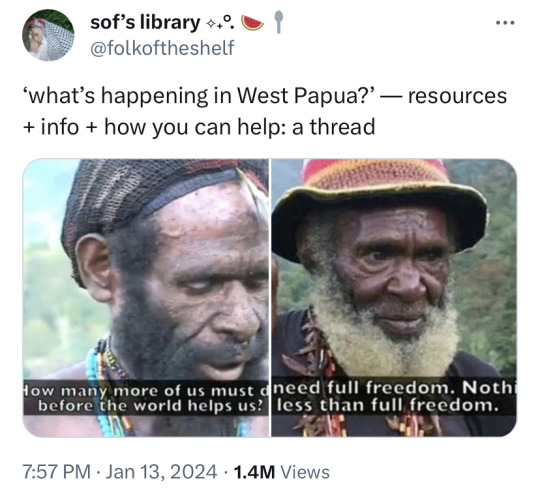
articles and news on what’s happening in west papua are so appallingly scarce that i could rarely find any except a few before this. as an indonesian, i didn’t even know any of this is happening in the first place until a few months ago because rarely any of the big news outlets have ever brought it up, much less in a scale that is necessary to gain the world’s attention. SO PLEASE CHECK THIS OUT, one article at a time if it seems too much (which is what i'm currently doing too).
i think it’s important to note that while indonesia has been loudly advocating for palestine’s freedom, it has also been committing silent acts of violence against the people of west papua and exploiting them for years and silence those AND others who have tried to bring it to light.
things included in the thread ->
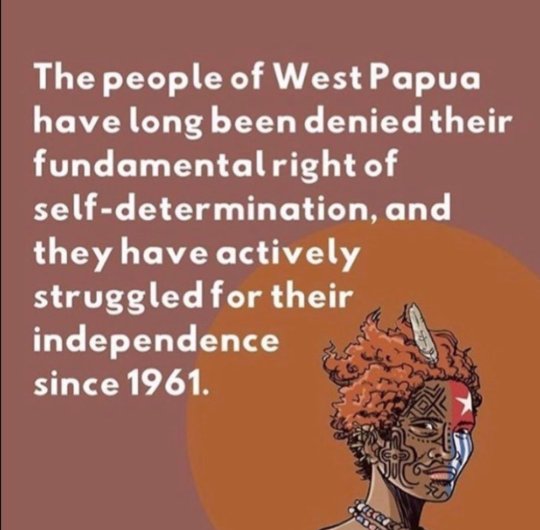
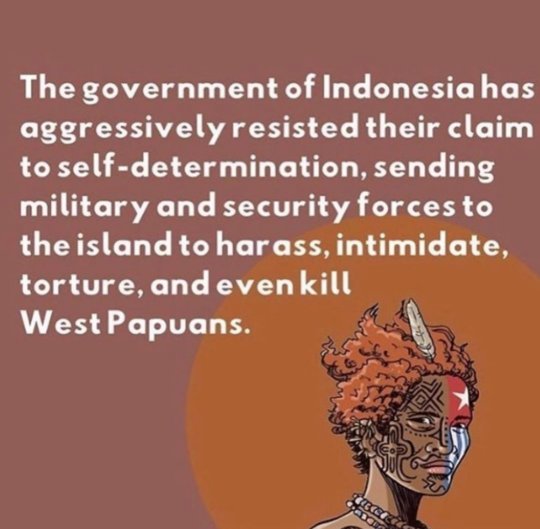
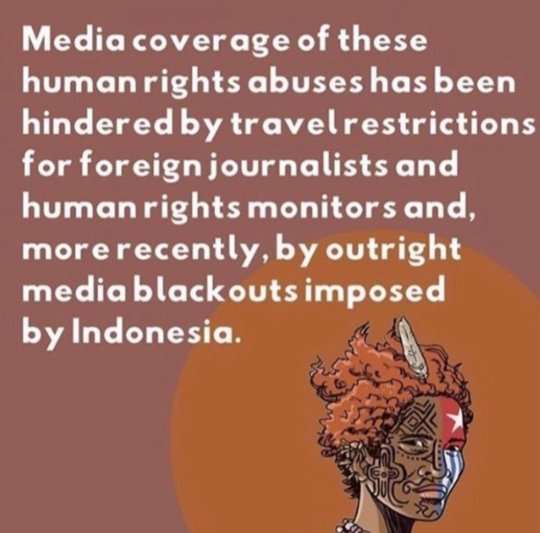
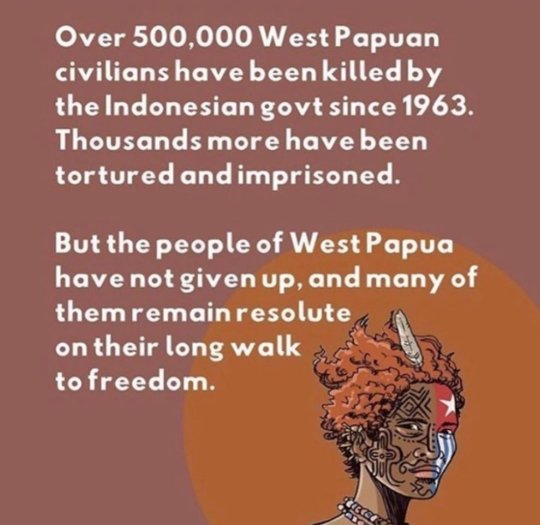
ARTICLES :
freewestpapua.org *the link isn't working at the moment but op has included screenshots in the tweet!
west papua : a history of exploitation (al jazeera)
courtesy of amnesty international
OTHERS :
amnesty international - "sudah, kasi tinggal dia mati" pembunuhan dan impunitas di papua (in bahasa)
BOOKS TO READ :
'the road : uprising in west papua' by john martinkus
'an act of free choice : decolonisation and the right to self-determination in west papua' by pieter drooglever
'merdeka and the morning star : civil resistance in west papua' by jason macleod
’see no evil : new zealand’s betrayal of the people of west papua’ by maire leadbeater
‘freedom in entangled worlds’ by eben kirksey
‘poisoned arrows’ by george monbiot
‘papua blood’ by peter bang
’west papua and indonesia since suharto’ by peter king
pdf available :
’the united nations and the indonesian takeover of west papua’ by john saltford
’west papua : the obliteration of a people’ by carmel budiardjo and liem soei liong
FILMS TO WATCH :
rebels of the forgotten world (1991)
blood on the cross (1999)
freedom for west papua (1999)
papua merdeka (2002)
west papua — the secret war in asia (2007)
forgotten bird of paradise (2009)
strange birds in paradise — a west papuan story (2010)
west papua — a journey to freedom (2011)
mama malind su hilang (our land has gone)
benny wenda — oslo freedom forum (2012)
isolated (2013)
courage is contagious — TEDx sydney (2013)
the road to home (2015)
punks for west papua (2016)
run it straight (2016)
act of no choice (2019)
paradise bombed (2023)
investigative tv reports :
inside indonesia’s secret war for west papua — ABC news (2020)
selling out west papua — al jazeera (2020)
INFOGRAPHICS :
amnesty international
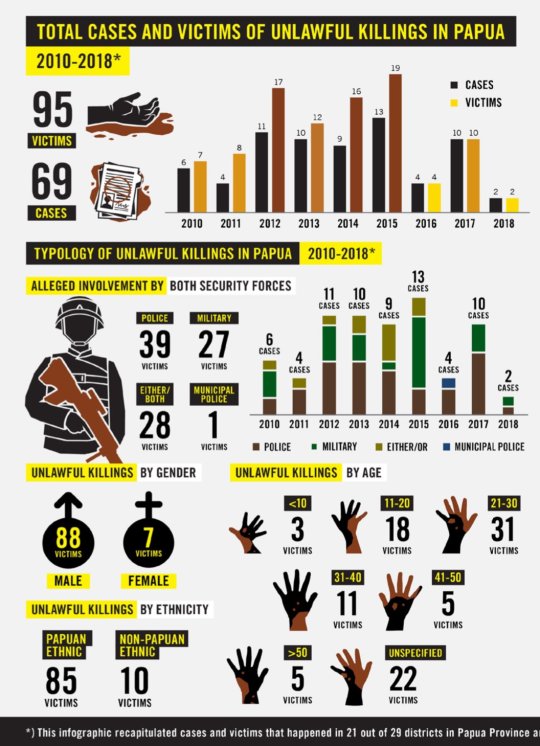

brief history
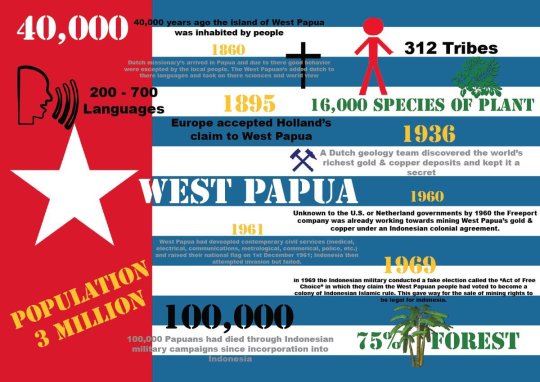
2017

2018
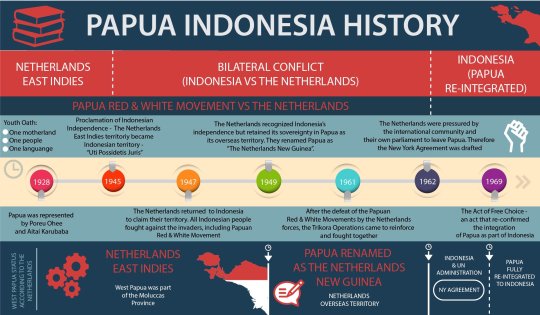

#putting a keep reading because i know some of you hate reblogging long posts that don’t match your aesthetic or whatever#west papua#free west papua#indonesia#papua new guinea#news
266 notes
·
View notes
Text

WORLDMUSICAWARD: Happy 33rd birthday to the gorgeous, hugely talented Singer, Songwriter, Producer & Global Icon, #LouisTomlinson, who rose to fame as a member of #OneDirection, one of the best-selling Boy Bands of all time, and became a chart-topping, history-making, award-winning Superstar in his own right! 👏🎂🎉🌟🐐👑❤️
Louis has contributed more in songwriting to One Direction than any other band member, with credits on most of the tracks of 'Midnight Memories', 'Four', and 'Made in the A.M.' and on 38 songs across the band's discography, and was the main guy in shifting 1D's music towards a more mature sound...
Louis is an amazing Solo Artist and has so far released 2 studio albums, 1 live album, 11 singles, 1 promotional single and 11 MVs! Louis debuted at #1 in the UK with his 2nd studio album 'Faith In The Future' in 2022 which also reached #5 on the Billboard 200, and spawned the hit singles singles "Bigger Than Me", "Out of My System" and "Silver Tongues"! His debut studio album 'Walls' (2020) debuted at #4 in the UK & #9 on the Billboard 200, becoming the 1st new album for Arista Records in almost 9 years to hit the US top 10! Louis' debut single "Just Hold On" with #SteveAoki reached #2 in the UK, and was certified platinum! In 2017 Louis released "Just Like You", "Miss You" & "Back to You" with #BebeRexha, which was certified platinum in the US and UK! In 2019, he released "Two of Us", a Tribute to his mother, followed by the hits "Kill My Mind", "We Made It", "Don't Let It Break Your Heart" and "Walls" in January 2020!
Louis has embarked on 2 world tours! His 'Faith in the Future World tour' began in North America in May 2023. In the context of the tour, Louis performed in North America and Europe in 2023 and Asia, Australia and Latin America in 2024. In November 2023, after a sold-out concert at the O2 Arena, Louis was nominated for the Live Act Award at the Rolling Stone UK Awards. During the Latin America leg of his 2nd World tour, Louis made history, becoming the 1st male Solo Artist to headline Mexico City's Autódromo Hermanos Rodríguez! He held a charity livestream of the event titled 'For Every Question Why', donating the proceeds to War Child UK. This year, Louis toured a summer 2024 festival circuit, including the Main Square Festival, Pinkpop, Ruisrock, Santander Music, Untold Festival, Sziget Festival, Frequency Festival, Victorious Festival, and Lollapalooza Berlin!
Louis has received numerous accolades including an MTV Europe Award for Best UK Act (2017), an iHeartRadio Music Award for Best Solo Breakout (2028), 3 Teen choice Awards for Choice Music Collaboration for "Just Hold On" (2017), Choice Male Artist (2018) & Choice single Male Artist (2020), a TDY award for Album of the Year (2020) for 'Walls' and most recently a Northern Music Award (2024) for Artist of the Year!
Louis is also a successful Producer and in 2015, he created his own record label, Triple Strings Ltd. In 2021, Louis founded and curated the indie music festival 'Away From Home' and in 2023, he officially launched his 28 streetwear-inspired unisex clothing line!
Louis is an active philanthropist and personally donated £2 million to Believe in Magic, which supports terminally ill children! He's also a Patron of the Bluebell Wood Children's Hospice. In April 2016, he joined the Soccer Aid 2016 star line-up, a biennial fundraiser for UNICEF. Louis actively supported the Black Lives Matter movement in May and June 2020, and attended the George Floyd protests in London.
36 notes
·
View notes
Text
People Think Krist Is Homophobic (but He Isn’t)
[TW: discussions of homophobia, death threats, "the rape filter joke", etc.]
Last September, I made a thread about The Whole Krist Thing, and I'd like to make a version here on Tumblr as well.

NOTE: My being a queer fan of Krist doesn’t override the feelings or opinions of other queer people. I fully understand that time on this planet is limited and you don't need to exert precious energy into researching an actor. The reason I'm making this is to provide context for people who are new to the fandom or just wondering why Krist is known as homophobic.
- Why I Made the Twitter Thread -
As a queer international fan living abroad, my understanding of Thailand, Thai culture, and Thai language is extremely limited. Like most of us, I rely entirely on translations, both official and fan-made.
After watching SOTUS for the first time in 2020, I saw English-speaking fans claiming that Krist Perawat, the actor who played Arthit, was homophobic. And it wasn't just one or two people saying it. It was dozens. Hundreds. That called for some research. I loved Arthit, and Krist's empathetic portrayal of him didn't mesh with the angry guy in the Instagram photo I was seeing passed around.
I'd made a number of queer Peraya fans on Twitter, so I went to them individually and asked, "What's this about Krist being homophobic?" As queer fans who were knowledgable and openly fond of Krist, I wanted to hear their side of things.
They sent me links and photos and videos and translations that thoroughly explained how Krist's reputation for being homophobic had gotten so out of control. The problem: those things weren't compiled in one place, and they were all on Twitter where the Asian Peraya fandom is most active. Interfans, meanwhile, took the worst of everything they could find and compiled it into contextless videos for Instagram, YouTube, TikTok, etc. Since the vast majority of Krist's fanbase is spread across Asia and many of them don't engage with the international fandom, it's no wonder to me that the homophobia thing has become so ubiquitous over the years.
It's a paradox where, in order to see the evidence of Krist's allyship, you kind of have to be a fan already. Or you have to know which keywords to use to navigate Twitter's nightmare of a search function (I know, Tumblr is worse). While I made that thread, I was regularly texting Peraya I knew things like, "Do you know where that one interview from 2019 is?" or, "Did you take a screenshot of the marriage equality post he made last month?"
The thread was difficult to make, and I'm a fan! What I know of Krist, I know because I've been a fan for three years and I have access to information that fans who have been here much longer can find.
I also procrastinated on making it for ages. I knew the amount of vitriol people hold against him, and I just wanted to enjoy my time in fandom quietly without calling waves of anger and hate to my carefully curated little corner of sunshine.
Then Krist was in a car accident.
And even though he was reportedly driving safely and slowly, Thailand is notorious for its poorly maintained roads and a high number of traffic accidents. Only months after receiving his first driver's license, Krist's car flipped upside down, and he had to reassure fans from the hospital that he was physically all right, just shaken.
Meanwhile, some international fans thought it was funny.

And that's when I started making the thread.
So, with all that said, let's start with Krist's allyship, because I know most of us agree that that's the bare minimum for an actor working in the BL industry and profiting off the queer community.
- Acts of Allyship -
In the early days of their SOTUS fame, Krist and Singto were interviewed about the LGBTQ+ community.
Acceptance and equality is something that the LGBTQ community still struggles to achieve up to this day. But both Singto and Krist believe that this should not be the case. “They are just humans. They are like me, and they are like everyone,” Krist claims. Furthermore, he mentions that we should all be given the freedom to love anyone we want to love. “It’s just natural,” he says.
“They don’t have to understand now,” Singto says, referring to those who can’t grasp same-sex relationships. “One day, when they find their true love, they will realize that love is the same no matter the gender.” Krist adds, “Gender is not relevant when it comes to love. But in case some people still don’t understand this in time, what’s important is that we all give due respect to each other at the end of the day.”
He's also educated himself in colors representative of the LGBTQ+ community.
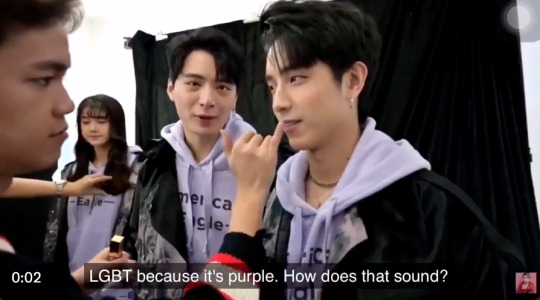
When Krist and Singto attended an award ceremony for their photoshoot in the gay magazine Attitude, Krist shared a sentiment that he gave to a queer friend of his. "If no one accepts you, you can stay with me, because I accept you for who you are." [Paraphrased]
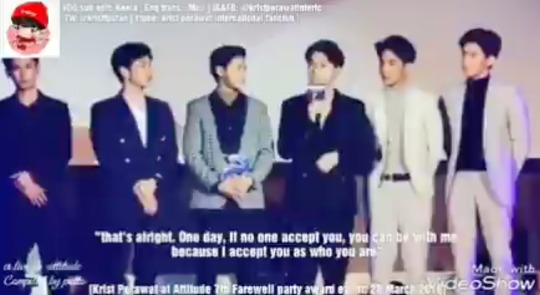
Despite Thailand's current government leaning on BL series as a new soft power, it's still very conservative, and its people are to this day fighting to see equal marriage recognized.
Krist often adds his voice to this fight on Instagram, specifically as someone who works in the BL industry. These were in 2021 and 2022:


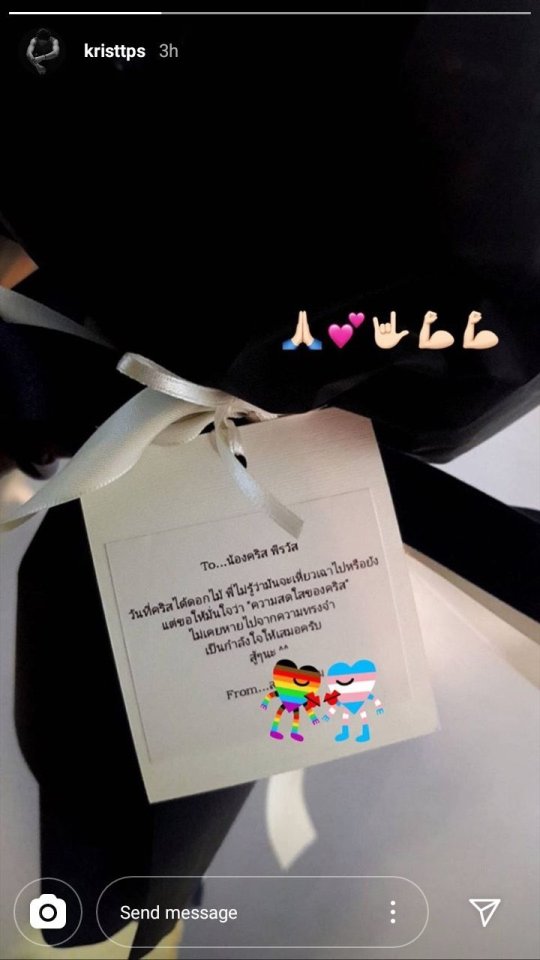

And, like many young people in Thailand, Krist also seems to support the Move Forward party. Earlier this week, he used an orange heart in a tweet to encourage people to go out and vote in the most recent election. One of the many things the Move Forward party is pushing for is the legalization of same-sex marriage "with the same rights and responsibilities as their heterosexual peers", which the current military government actively does not.

- His Circle -
When I was making my Twitter thread, I hesitated before including mention of his queer friends and coworkers. I knew how that would sound, but in the same way I felt it was important to mention my own queerness, I also think it's important to highlight not just the presence of queer people in his life, but how comfortable they are with him.
As I said in my Twitter thread, having queer friends isn’t indicative of anything substantial, but I do think it’s important to look at how those queer friends interact with him. If you’re queer, you know firsthand which friends you’d be physically affectionate with. The entertainment industry is its own world, of course, and the weight and meaning of relationships and connections can be different, but for all Krist's fame and popularity, he's not so famous or remotely powerful that faking a friendship with him is going to get them very far.
Among his queer friends, you've got Jennie who babies him, Godji who treats him like her son, and Oat who still adores him years after SOTUS. All of them queer, all of them visibly affectionate in a way that feels authentic, at least to me.





On the professional side of things, I think the best example of someone who wouldn't bother with him if he were homophobic is Golf Tanwarin Sukkhapisit. In 2022, Krist worked on The War of Flowers with Golf, a nonbinary queer activist, former MP, and director of The Eclipse. Since they're not just a queer person in the industry but a vocal queer activist who's made incredible progress for the community in their country, I value their judgment of his character.
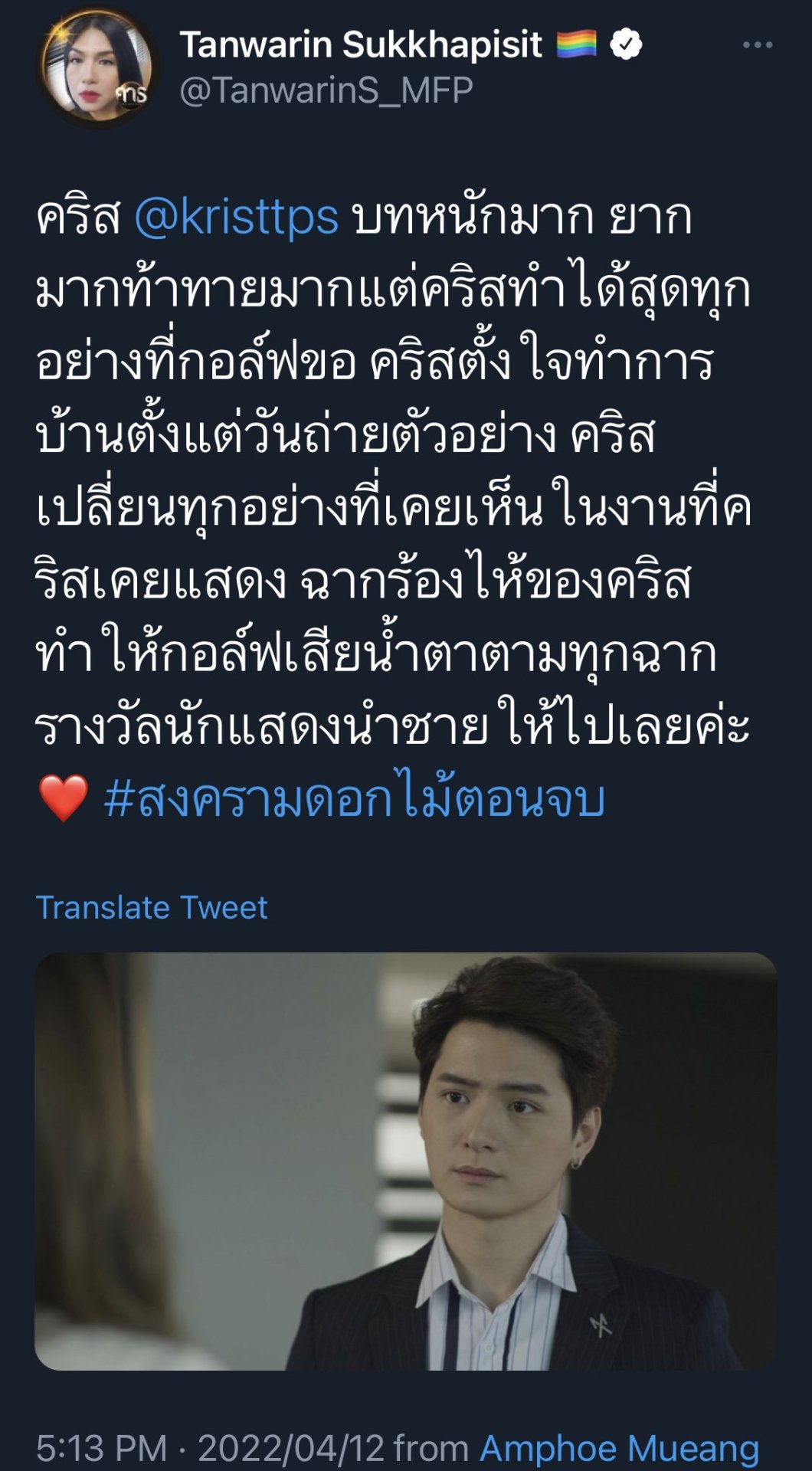

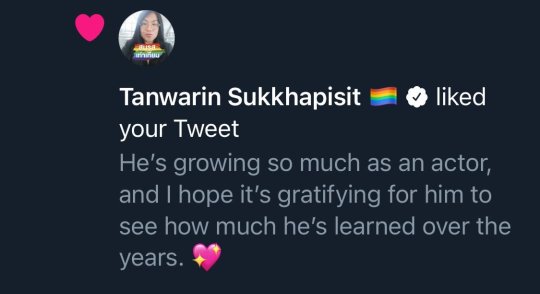
Again, the reason I bring up these people isn't to say, "Look! Queer people! He knows some!"
It's to point out that he's close to them, and it disrespects their judgment to casually assume that they’d cosy up to a homophobe.
It's a small point, yes, but it was important to me when I first became a fan to see that queer people who know him personally had "vetted" him.
- Growth -
For this next section, I'll address three things I see brought up most often: the rape filter joke, the rumor that Krist said he doesn't like watching men kiss, and the claim that he's only doing BL because rent is due.
1) The Rape Filter Joke
In 2017, Krist and Singto were on a live with (I think) two other friends. They were testing out different filters, and when they got to a blur effect, one of them (one of the friends, I think) said it looked like the filter they put over victims of sexual assault on the news. They all laughed, including Krist and Singto.
I can't find a video of the original event, but we do have a translation of the apology he gave in 2018, and the public apology he made in 2020 when the video resurfaced again.
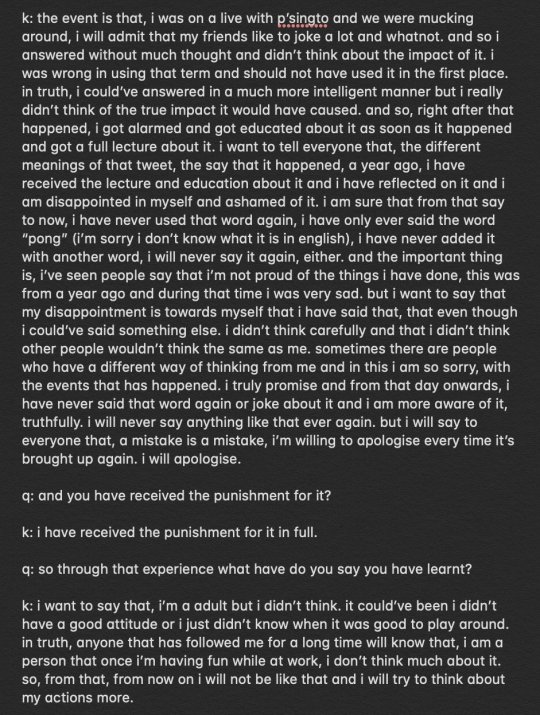
While this is unfortunate, and it would be nice if he hadn’t done it, I’m more interested in how he responds to criticism and his growth afterward. The incident was in 2017, but even speaking on it in 2020, he didn't make excuses for himself.
He apologized, accepted culpability, educated himself, and has never repeated it.
2) Krist "Doesn't Like to Watch Men Kiss"
There's also a claim that goes around that Krist said he doesn't like to watch men kiss. But that isn't what he said.
The subtitled interview that this claim was taken from has been split into two parts, and I think a lot of people have only seen the first half, if they've seen either.
(Also, my deepest apologies, but I'm linking you to Twitter for the video clips.)
In the first clip, the hosts tease Krist about Singto's sex scene with another actor in Close Friends. I can't speak to the nuances of what Krist is saying in Thai, but in the subtitles, he's basically saying that as a guy, he doesn't want to watch stuff like that and just skips past Singto and his partner to one of the other couples, like the male-female pairs. With just this clip, I agree that it doesn't sound great.
But in the second clip, the hosts tease Krist until he admits that the "stuff" he doesn't want to watch is Singto specifically kissing people who aren't him. Krist's jealousy, especially when it comes to Singto, is a well-trod fanservice joke.


3) He's Doing BL Only for the Money
I mean, I have no idea, but it'd be very weird if this was true, because he hasn't been in a BL since 2018 (if you count Our Skyy), and he's doing very well for himself financially.
Listen, this is probably the least serious people get when they criticize him, but I'm including it because why not, this is already a thesis.
From what I understand based on actors' comments, BL roles don't make a lot of money for the actors. (Boun even quoted a surprisingly low daily salary recently, and I'll share it here if I find it again.) Of course, I imagine Krist has enough fame and clout that he gets paid more than most actors, but to be frank, he absolutely makes more from all his other work.
Apart from the acting work he's done, he hosts two music shows, he starred in a musical recently, GMM just flew him to Japan for the first leg of his Asia concert tour, he runs a restaurant with Wave, and he has a bunch of sponsorships. And that's off the top of my head. The car from his accident in 2021 was a luxury model, and he replaced it with another pretty soon afterward. I'm not bragging for him or anything, but the "he's just doing BL for the money" is an odd thing to say when he probably already earns more than most without doing it.
It would have been a better argument back in 2016 when Krist's family was deep in debt. Krist's said that his main motivation to join the entertainment industry back then was to pay off that debt for his family, and he did so with the money he made from SOTUS.
Krist has spoken in the past about wanting to do more BL roles, but GMM preferred that he work with Singto. Now that Singto's left GMM (likely to start his own agency), Krist is in Be My Favorite, so I think his explanation tracks.
It's also worth mentioning that you can do something for the money and also love what you do. In the case of SOTUS, Arthit wasn't just a role that made him money, he's the character who changed Krist's life. He honors Arthit to this day by always wearing the bracelet he wore to his audition and by naming his music studio "SUN St." after Arthit.
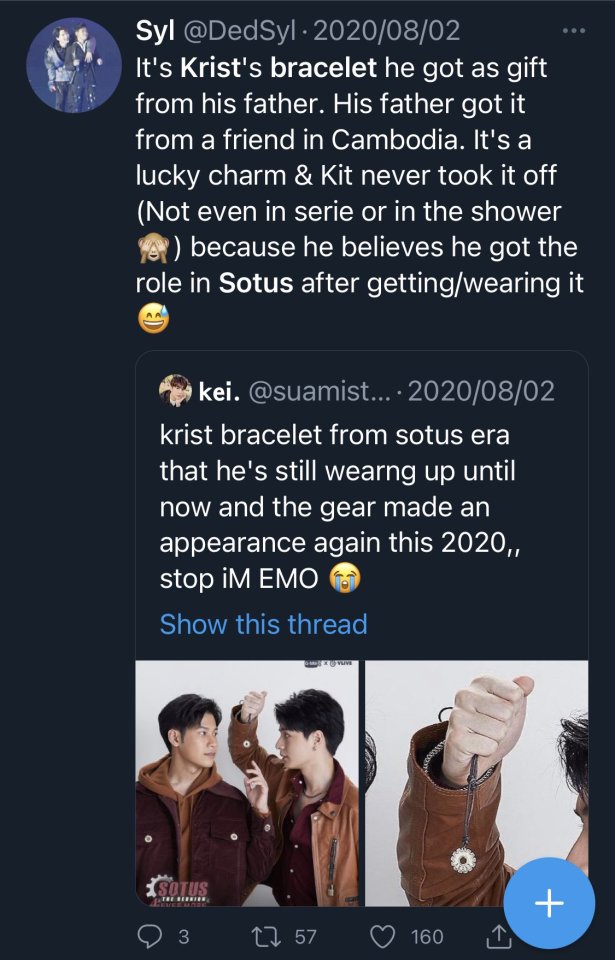
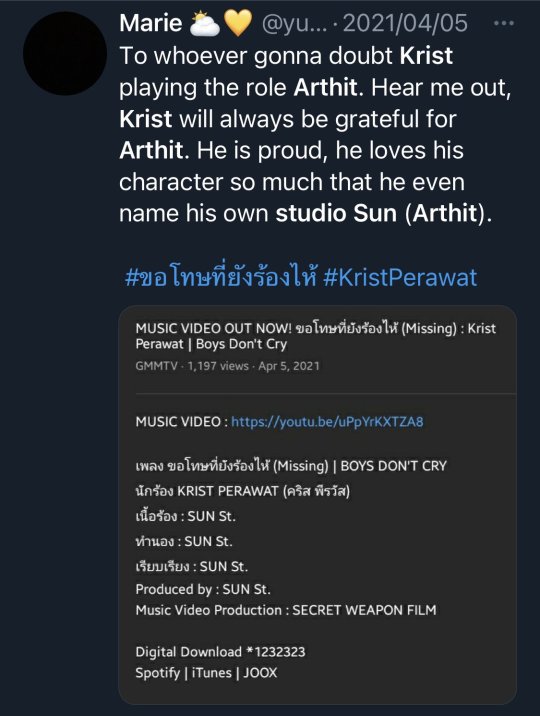
(This is a very minor point, but I don't think a homophobe would cherish a queer role to quite that extent even if it was their kick-off point. If anything, they'd probably try to bury the role and pretend their real success started later.)
- Perception of Sexuality -
I think the reason the IG story hits people so hard is because Krist's reaction makes it seem like he's horrified that people could even think he's gay. My understanding is that he was tired of people interrogating him about his sexuality.
Krist is very openly affectionate with the people he loves, regardless of gender, which is clear in the photos with his friends above. Thus, he's always been like that with Singto. They hug before every show, they sleep on each other, cuddle, what have you. All the stuff of people who have developed a tight bond over the years.
When Krist was asked if he was afraid that that would put off potential partners in the future (which, good god, the questions they're asked) Krist said he doesn't care how people perceive his sexuality.



This was in 2018, the year Our Skyy aired, and he's said similar things in passing before and since.
- Conclusion -
All of what I've posted here is just a slice of what's out there. This is just the stuff I could find with reliable English translations because I'm making this for an English-speaking audience. Krist's fans already know all of this, which is why he has queer fans in the first place, and a lot of them are just too tired by hate fatigue to keep correcting misinformation.
I'm not trying to get every person in the world to like Krist, I promise. He's not perfect. He's a loud mess, and while he has four cats who love him, they're also exhausted by him. I just happen to like loud, obnoxious people, especially when they're as kind as he is.
There are plenty of Thai actors I don't vibe with for any number of reasons ranging from serious to petty. You have my written permission to dislike some people.
The Instagram story he posted was a bad move, we're all agreed. He agrees. He's apologized multiple times over the years. Whether one accepts his apologies is each person’s right, and I understand if this is enough to turn people away.
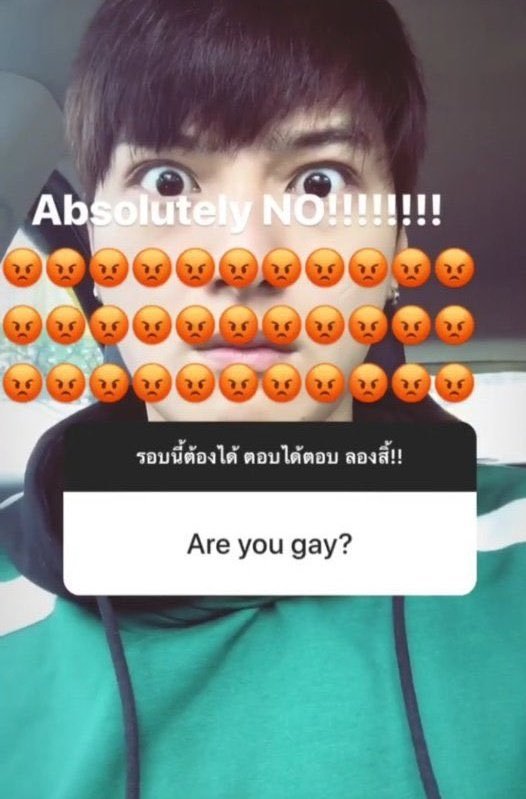
I just hope it's clear that he's been a staunch ally of the queer community and remains so to this day.
Personally, I'm more upset about the question.

This isn't a question you ask anyone.
And this wasn't the first fan to ask him.
According to people who have been fans from the SOTUS era, Krist and Singto were both relentlessly dogged by fans about 1) their sexualities and 2) details about their relationship with each other. We've all likely seen it happen to actors today, but back in 2016, there weren't hundreds of BL actors vying for the spotlight, so the spotlight hit Krist and Singto in a way that we can't imagine today. Most of us, myself included, arrived in this fandom long after SOTUS's meteoric rise to popularity that ended up saving GMMTV from bankruptcy, but given how many fans still behave like they're entitled to know an actor's sexuality, I think it's safe to trust that it was relentless. Fans accusing Kit Connor of "queerbaiting" as recently as 2022 is proof of that.
At the end of the day, there are plenty of reasons to dislike Krist, just like there are to dislike any person on this planet. He's hyperactive, he's whiny, etc. He's not flawless, but I think he's more than shown through his actions that he isn't homophobic, either.
He's not some actor playing queer roles for clout. He's vocally supportive of queer rights, and he backed that up this week in the polls by voting for the most progressive party in his country who are actively pushing for marriage equality.
But like I said, you don't have to like him, so I'll end this post with a quote from a friend who doesn't like Krist for the funniest reason I've ever heard:
"I don't think Krist is homophobic. I just don't like him because he reminds me of every kindergartener who demanded my attention at the exact moment when I was carrying something that could spill – and then it did spill, and they laughed about it for five minutes."
446 notes
·
View notes
Text
Dongnanosuchus: The Maoming Alligator
Currently working on the wikipedia page for Dongnanosuchus, so I'm happy to share some new illustrations and of course accompanying info.


Dongnanosuchus is a small crocodilian from the Eocene of China that is assigned to the clade Orientalosuchina. Orientalosuchins are currently poorly understood animals that were possibly endemic to Asia throughout the Cretaceous and Paleogene, tho its not entirely clear how they relate to other crocodilians.
Traditionally, by which I mean the original interpretation from 2019, they are thought to be some early branch of alligatoroid, but some studies have disputed this. One from this year showed that they could be reasonably placed at the base of Longirostres (the croc+gharial clade) and last year a study even had some results recover them as mekosuchines (tho the vast majority of analysis from said study did not recover the same result). Part of the reason for this is that they kinda mix and match features of both crocodyloids and alligatoroids, so future studies will be needed to better clarify all that.
Fossils of Dongnanosuchus are exlusively known from the Chinese Maoming Basin, which during the Eocene represented a lake located in a subtropical environment. In addition to Dongnanosuchus, this region was inhabited by one other crocodilian, the early gavialoid Maomingosuchus. This actually brings up an interesting point.
Tobias Massonne has highlighted that during the Late Eocene, there is an interesting set of co-occurances among Asian crocodilians. Maomingosuchus was found in three major basins: the Krabi Basin in Thailand, the Na Duong Basin in Vietnam and the Maoming Basin in China. Each of these basins was also home to an orientalosuchin. The Krabi was home to Krabisuchus, Na Duong Orientalosuchus and Maoming Dongnanosuchus. So each basin featured its own distinct genus of short-snouted orientalosuchin and a distinct species of the narrow-snouted Maomingosuchus (as shown in Massonne's figure below).

#dongnanosuchus#orientalosuchina#crocodilia#alligatoroidea#crocodyloidea#eocene#prehistory#palaeoblr#paleontology#croc#gator#maoming alligator
24 notes
·
View notes
Text
Also preserved on our archive
Coronaviruses like COVID, influenza and respiratory syncytial virus (RSV) “must be taken seriously” as they are particularly dangerous for at-risk groups including the elderly, pregnant women and people suffering from existing or chronic illness, WHO Europe insisted, as it launched a region-wide protection campaign.
“Collective amnesia on COVID-19 has set in and this is concerning,” said WHO Regional Director for Europe, Dr Hans Kluge. “Individuals, communities, and countries understandably want to move on from the trauma of the pandemic years. Yet COVID-19 is still very much with us, co-circulating with other respiratory viruses.”
European spotlight The WHO official noted that 53 countries across Europe and Central Asia still experience up to 72,000 deaths from seasonal influenza, accounting for approximately 20 per cent of the global burden. “The vast majority of these deaths can be prevented,” he said, adding that the most vulnerable “must be protected” by vaccine immunization, which is proven to prevent illness and severe outcomes.
In the 28 days to 22 September, health authorities in WHO’s European region reported just over 278,000 COVID-19 cases and 748 deaths, from Cyprus to Moldova and from Ireland to Russia. Those numbers are higher than any other WHO region and are likely underestimates, the UN health agency said.
According to WHO data, COVID-19 has killed more than seven million people since the outbreak began in late 2019, with most deaths reported in the United States (1.2 million), Brazil (702,000), India (534,000) and Russia (403,000).
Unpredictable pathogens “COVID-19 devastated every corner of the planet,” Dr Kluge said. “Mpox clade II emerged unexpectedly in Europe in 2022 and continues to circulate in the region, even as mpox clade I in Central-East Africa has triggered a Public Health Emergency of International Concern. And RSV and influenza will continue to co-circulate with heightened intensity in the coming months, especially with more people gathering indoors due to colder weather.”
National health authorities should fulfil their role of protecting vulnerable populations, the WHO senior official continued, as he urged greater investment in public healthcare to protect overburdened healthworkers.
New and existing viruses can “wreak havoc on health systems, economies, and society,” Dr Kluge warned, in a call for regular and consistent surveillance and monitoring to “ensure we are ready for the next major health emergency, whenever and wherever it comes”.
As part of a WHO Europe public health campaign to prevent the spread of influenza and other respiratory diseases, the UN agency noted that key protective measures include staying at home when sick, practising hand and cough hygiene, and ensuring proper ventilation.
Vulnerable populations who also include those with weakened immune systems and anyone who believes they may have caught a respiratory virus should wear a close-fitting mask in crowded or enclosed spaces, WHO added.
“Protecting against respiratory viruses is the shared responsibility of governments and all of society,” WHO’s Dr Kluge said. “Everyone should play their part in fostering a culture of care and solidarity with the vulnerable.”
#mask up#covid#pandemic#covid 19#wear a mask#public health#coronavirus#still coviding#sars cov 2#wear a respirator#RSV
44 notes
·
View notes